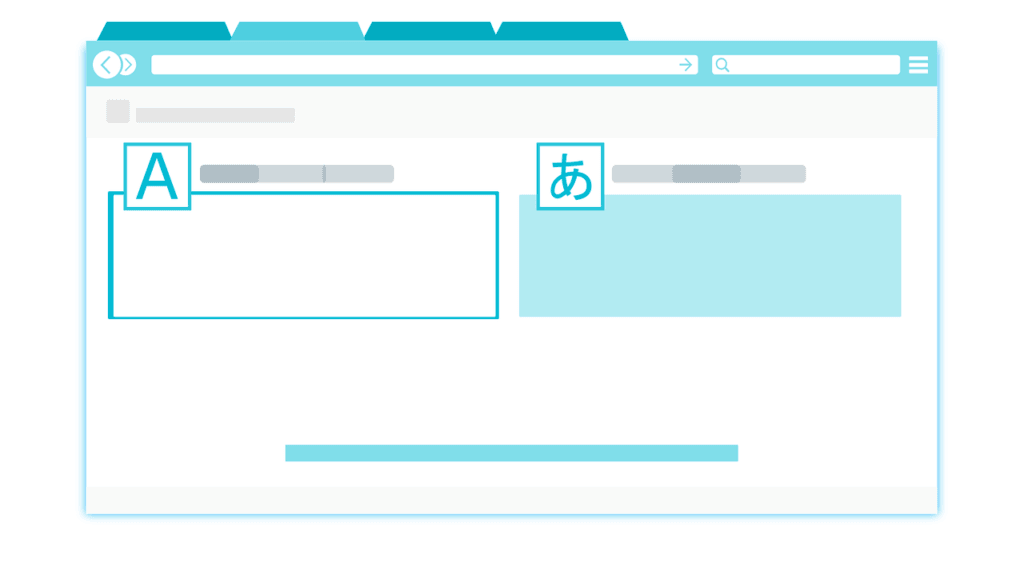This Article has been revised, edited and added to, by Poulomi Chakraborty.
- Understanding the Basics of International SEO
- Implementing and Optimizing Hreflang Tags
- Optimizing Your Website for Multiple Languages and Regions
- Managing Technical SEO Challenges in International Healthcare
- Leveraging Tools and Technologies for International SEO
- Integrating Content and Technical Strategies for International SEO
- Conclusion
In today’s globalized world, healthcare providers often cater to international audiences. Optimizing your website for international search engines is crucial for reaching patients across different countries. This involves more than just translating content; it requires a comprehensive understanding of the technical aspects of SEO. In this article, we will delve into the essential technical elements of international SEO for healthcare, ensuring your website is accessible, relevant, and visible to patients worldwide.
Understanding the Basics of International SEO

International SEO involves optimizing your website to rank well in search engines for different countries and languages. For healthcare providers, this means ensuring that your services are visible to potential patients across various regions.
Domain Structure: Subdomains vs. Subdirectories
One of the first technical decisions you will need to make is how to structure your website’s domain for different countries. This can be done using subdomains or subdirectories. Let’s explore the differences and their implications for SEO.
Subdomains
A subdomain is a prefix added to your main domain. For example, if your main website is “healthcare.com,” a subdomain for Germany might be “de.healthcare.com.” Each subdomain is treated as a separate website by search engines.
Subdirectories
A subdirectory is a folder within your main domain. For example, the German version of your site might be “healthcare.com/de/.” Subdirectories are considered part of your main website and share its domain authority.
Comparing Subdomains and Subdirectories
Both subdomains and subdirectories have their pros and cons. Subdomains offer greater flexibility and are easier to manage separately. However, they can dilute your domain authority, as each subdomain is treated as a distinct entity by search engines. This means that you may need to invest more effort in building authority for each subdomain.
Subdirectories, on the other hand, benefit from the domain authority of your main site. This can make it easier to rank in search engines. However, managing multiple subdirectories can be more complex, as they are all interconnected.
When deciding between subdomains and subdirectories, consider your overall SEO strategy, the resources available for maintaining multiple sites, and how much domain authority your main site already has.
Hreflang Tags: Signaling Language and Region
Hreflang tags are an essential component of international SEO. These HTML tags signal to search engines the language and regional targeting of your webpages. Implementing hreflang tags correctly ensures that users see the appropriate version of your website based on their language and location.
How Hreflang Tags Work
Hreflang tags are placed in the header of your webpages and specify the language and region for which the content is intended. For example, if you have a page in Spanish for users in Spain, you would use the hreflang tag “es-es.” If you have a page in Spanish for users in Mexico, you would use “es-mx.”
Benefits of Hreflang Tags
Proper use of hreflang tags helps avoid duplicate content issues by ensuring that search engines understand which version of your content to display to users. This improves the user experience by directing visitors to the most relevant version of your site, which can enhance engagement and conversion rates.
Local Hosting and CDN: Improving Load Times
Website speed is a critical factor for both user experience and SEO. When targeting international audiences, it’s important to ensure that your site loads quickly for users in different regions.
Local Hosting
Local hosting involves hosting your website on servers located in the same country as your target audience. This can significantly reduce load times, as data has to travel a shorter distance. If you are targeting multiple countries, you may consider using local hosting in each of those regions.
Content Delivery Network (CDN)
A CDN is a network of servers distributed across various locations worldwide. When a user accesses your website, the CDN serves the content from the server closest to them. This reduces latency and improves load times. Implementing a CDN is a cost-effective way to enhance your site’s performance for international users without the need for multiple local hosting setups.
Geotargeting: Tailoring Content to Local Audiences
Geotargeting allows you to tailor your content and marketing efforts to specific geographical locations. This involves more than just translating your content into different languages; it requires adapting your messaging to the cultural and regional nuances of your target audience.
Localized Content
Creating localized content means more than just translating text. It involves adapting your content to reflect local customs, cultural references, and healthcare practices. For example, the way healthcare services are perceived and accessed can vary significantly between countries. Understanding these differences and reflecting them in your content can enhance relevance and engagement.
Using Google Search Console for Geotargeting
Google Search Console provides tools to help you geotarget your content. You can specify a target country for your entire site or individual sections. This signals to Google that you want your content to rank for searches originating from that country.
Implementing and Optimizing Hreflang Tags

Hreflang tags are crucial for international SEO as they help search engines serve the correct language or regional URL to users. Incorrect implementation can lead to indexing issues and poor user experience, so it’s vital to get them right.
Best Practices for Hreflang Tags
Implementing hreflang tags requires precision and attention to detail. Here are some best practices to ensure you get it right:
Correct Syntax and Placement
The hreflang attribute should be placed within the HTML header of each page. The correct syntax looks like this:

Ensure the href attribute points to the correct URL and the hreflang attribute accurately reflects the language and region.
Self-Referencing Tags
Each page should include a self-referencing hreflang tag. This means that a page targeted at English speakers in the US should have a tag pointing to itself:

This helps search engines understand that the page has specific versions for different languages or regions.
Consistency Across Pages
Ensure that all pages in different languages reference each other consistently. If you have pages in English, German, and French, each page should reference the others using hreflang tags. Consistency helps avoid confusion and ensures that users are directed to the appropriate version of your content.
Handling Regional Variations
If you have different versions of a page for different regions speaking the same language, use region-specific hreflang tags. For example, if you have an English page for the US and another for the UK, use “en-us” and “en-gb” respectively. This ensures users in each region see the most relevant version of your content.
Common Hreflang Tag Mistakes and How to Avoid Them
Even minor mistakes in implementing hreflang tags can lead to significant SEO issues. Here are some common errors and tips to avoid them:
Incorrect Language or Region Codes
Ensure you use the correct language and region codes according to the ISO 639-1 and ISO 3166-1 alpha-2 standards. Using incorrect codes can render hreflang tags ineffective.
Missing or Incorrect Tags
Double-check that all pages have the correct hreflang tags. Missing tags or pointing to the wrong URLs can confuse search engines and lead to incorrect content being served to users.
Not Using Hreflang Tags for All Languages and Regions
If you serve multiple languages and regions, ensure you include hreflang tags for all versions of your content. Omitting some versions can result in those pages not being correctly indexed and displayed.
Testing and Validating Hreflang Tags
After implementing hreflang tags, it’s crucial to test and validate them to ensure they are working correctly.
Using Google’s Hreflang Testing Tool
Google provides a hreflang testing tool within Google Search Console. This tool can help you identify and fix issues with your hreflang implementation. Regularly checking your tags using this tool can help you maintain optimal SEO performance.
Manual Checks and Validation
In addition to automated tools, perform manual checks to ensure hreflang tags are correctly implemented. This involves inspecting the HTML code of your pages and verifying that the tags are present and correctly formatted.
The Role of Hreflang Tags in User Experience
Implementing hreflang tags correctly not only helps with SEO but also enhances the user experience. By ensuring that users are directed to the appropriate language or regional version of your content, you improve engagement and satisfaction. This can lead to higher conversion rates and better overall performance of your website.
Optimizing Your Website for Multiple Languages and Regions

Optimizing a healthcare website for multiple languages and regions is a multifaceted process that involves several technical and strategic considerations. Ensuring that your content is accessible and relevant to a diverse international audience can significantly enhance your global reach and patient engagement.
Choosing the Right Domain Structure
Deciding between subdomains, subdirectories, and country-code top-level domains (ccTLDs) is a crucial step in international SEO. Each option has its advantages and drawbacks, and the right choice depends on your specific needs and resources.
Subdomains, such as “de.healthcare.com,” allow you to separate content by language or region while still benefiting from the main domain’s authority. However, managing multiple subdomains can be complex and may require additional SEO efforts to build authority for each subdomain.
Subdirectories, such as “healthcare.com/de/,” leverage the authority of the main domain, making it easier to manage and maintain. This structure is often recommended for smaller teams or those with limited resources. It also ensures that all content is part of a unified site, which can simplify SEO efforts.
Country-code top-level domains (ccTLDs), such as “healthcare.de,” signal to search engines that your content is specific to a particular country. While ccTLDs can enhance local SEO performance, they require significant resources to manage multiple separate sites and build authority for each domain.
Localized Keyword Research
Keyword research for international SEO goes beyond simply translating keywords from one language to another. It involves understanding how users in different regions search for healthcare services and identifying culturally relevant search terms.
Start by researching keywords in the target language using tools like Google Keyword Planner or Ahrefs. Consider regional variations in language, search behavior, and terminology. For example, the same medical procedure might be referred to differently in various countries, even if they speak the same language.
Analyzing local competitors can also provide valuable insights into the keywords they are targeting and the content they are producing. Understanding the competitive landscape helps you identify gaps and opportunities in your own SEO strategy.
Creating High-Quality, Localized Content
Creating localized content means more than just translating your existing pages. It involves adapting your content to meet the cultural, linguistic, and healthcare needs of your target audience.
Work with native speakers and local experts to ensure that your translations are accurate and culturally appropriate. Consider the local healthcare context, including prevalent health issues, common treatments, and patient concerns. This approach ensures that your content is not only understandable but also relevant and engaging.
Using culturally appropriate images, examples, and references can further enhance the relatability of your content. Visuals should reflect the diversity of your audience and resonate with their experiences and expectations.
Technical Optimization for Localized Websites
Technical optimization is critical for ensuring that your localized websites perform well in search engines and provide a seamless user experience. This includes implementing hreflang tags, optimizing site speed, and ensuring mobile compatibility.
Implement hreflang tags to signal to search engines the language and regional targeting of your content. This helps avoid duplicate content issues and ensures that users are directed to the correct version of your site. Regularly test and validate your hreflang implementation to avoid common errors and maintain optimal performance.
Site speed is another crucial factor. Use a content delivery network (CDN) to serve your website from servers closest to your users. Optimize images and other media to reduce load times, and ensure that your site is responsive and accessible on all devices.
Leveraging Local Backlinks and Citations
Building backlinks and citations from local websites can enhance your authority and visibility in regional search results. Engage with local health organizations, participate in community events, and collaborate with local influencers to earn valuable backlinks.
Submitting your site to local directories and ensuring consistent NAP (Name, Address, Phone number) information across all listings can further boost your local SEO efforts. Positive reviews on platforms like Google My Business and local healthcare review sites can enhance your credibility and attract more patients.
Monitoring and Adjusting Your International SEO Strategy
Regularly monitoring your international SEO performance is essential for identifying areas of improvement and adapting your strategy. Use tools like Google Analytics and Google Search Console to track key metrics, such as organic traffic, bounce rates, and conversions.
Pay attention to the performance of individual language and regional versions of your site. Analyze user behavior and feedback to understand how different audiences interact with your content. Adjust your strategy based on these insights to ensure that your website continues to meet the needs of a diverse international audience.

Managing Technical SEO Challenges in International Healthcare
As healthcare providers expand their reach globally, they encounter various technical challenges that must be addressed to maintain optimal SEO performance. These challenges include managing site structure, ensuring consistent data, dealing with legal regulations, and more. Addressing these issues effectively is crucial for maintaining a seamless user experience and achieving high search engine rankings.
Ensuring Consistent Data and NAP Information
Maintaining consistent Name, Address, and Phone number (NAP) information across all platforms is vital for local SEO. Inconsistent data can confuse search engines and users, leading to lower rankings and reduced trust.
Regular audits of your NAP information across your website, local directories, social media profiles, and other platforms are essential. Use tools like Moz Local or Yext to manage and synchronize your business information. Ensuring that your NAP data is accurate and consistent helps search engines verify your business and improve your local search rankings.
Navigating Legal and Regulatory Requirements
Healthcare providers must navigate various legal and regulatory requirements when operating internationally. These regulations can affect how you handle patient data, advertise your services, and present information on your website.
Complying with data protection laws, such as the General Data Protection Regulation (GDPR) in Europe, is crucial. Implement robust data protection measures, including secure data storage, encryption, and clear privacy policies. Ensure that your website includes necessary disclaimers and consents for data collection and processing.
Healthcare advertising regulations vary by country and can impact the claims you make and the way you market your services. Familiarize yourself with local advertising standards and work with legal experts to ensure compliance. This helps build trust with patients and avoid legal issues.
Implementing Structured Data Markup
Structured data markup, such as schema.org, helps search engines understand the content of your website and display rich snippets in search results. For healthcare websites, implementing structured data can enhance your visibility and provide valuable information to users directly in search results.
Use structured data to mark up key information, such as healthcare provider details, medical procedures, and patient reviews. This can improve your search engine rankings and increase click-through rates by providing users with more detailed and relevant information.
Regularly test your structured data using tools like Google’s Structured Data Testing Tool to ensure it is correctly implemented and free of errors. Keeping your structured data up to date helps maintain your site’s performance and visibility.
Managing Duplicate Content Issues
Duplicate content can arise when you have multiple versions of the same page for different languages or regions. This can confuse search engines and negatively impact your rankings.
Implement canonical tags to indicate the preferred version of a page when duplicate content is unavoidable. This tells search engines which version to index and rank, helping to avoid penalties and maintain your SEO performance.
Hreflang tags, as discussed earlier, also play a crucial role in managing duplicate content by signaling to search engines the language and regional targeting of your pages. Ensuring correct and consistent use of hreflang tags helps search engines serve the right version of your content to users.
Ensuring Mobile Optimization
With an increasing number of users accessing healthcare information on mobile devices, ensuring that your website is mobile-friendly is essential. Mobile optimization involves more than just responsive design; it includes optimizing load times, navigation, and overall user experience on mobile devices.
Use Google’s Mobile-Friendly Test to evaluate your site’s mobile performance. Address any issues identified, such as slow load times or poor navigation, to enhance the mobile user experience. Implementing AMP (Accelerated Mobile Pages) can also improve mobile load times and performance.
Enhancing Site Speed and Performance
Site speed is a critical factor for both user experience and SEO. Slow-loading websites can frustrate users and lead to higher bounce rates, negatively impacting your rankings.
Optimize your images and use a content delivery network (CDN) to serve content from servers closer to your users. Minimize the use of heavy scripts and plugins that can slow down your site. Regularly monitor your site’s performance using tools like Google PageSpeed Insights and address any issues promptly.
Handling Multilingual and Multiregional SEO
Managing SEO for multiple languages and regions requires a comprehensive approach that addresses the unique needs and preferences of each audience.
Develop a clear strategy for creating and managing multilingual and multiregional content. Use professional localization services to ensure accurate and culturally relevant translations. Implement hreflang tags and structured data to signal the language and regional targeting of your pages.
Monitor the performance of each version of your site using tools like Google Analytics and Search Console. Analyze user behavior and feedback to identify areas for improvement and adapt your strategy accordingly.
Leveraging Tools and Technologies for International SEO

Successfully managing the technical aspects of international SEO for healthcare requires leveraging various tools and technologies. These tools can help you streamline processes, monitor performance, and ensure compliance with best practices. In this section, we will explore some of the essential tools and technologies that can aid in your international SEO efforts.
Keyword Research and Analysis Tools
Effective keyword research is foundational for international SEO. Identifying the right keywords in different languages and regions ensures that your content is relevant and discoverable by your target audience.
Tools like Google Keyword Planner and Ahrefs can help you conduct keyword research for various languages and regions. These tools allow you to see search volumes, competition levels, and keyword suggestions tailored to your target markets. SEMrush is another powerful tool that provides insights into keyword trends, competitor analysis, and SERP features.
Understanding local search behavior through these tools can help you identify the most relevant and high-impact keywords for your content. This data-driven approach ensures that your SEO efforts are focused and effective.
Website Analytics and Performance Monitoring
Monitoring your website’s performance is crucial for understanding how well your international SEO strategies are working. Google Analytics is an essential tool that provides comprehensive insights into your website traffic, user behavior, and conversion metrics.
Set up Google Analytics to track the performance of different language and regional versions of your site. This allows you to see which versions are performing well and where improvements are needed. Analyze metrics such as bounce rates, average session duration, and pages per session to gauge user engagement and satisfaction.
Google Search Console is another valuable tool for monitoring your site’s presence in search results. It provides data on search queries, click-through rates, and indexing issues. Regularly reviewing this data can help you identify and resolve technical SEO problems that may be affecting your site’s performance.
Content Management Systems (CMS)
Choosing the right CMS can significantly impact your ability to manage multilingual and multiregional content. WordPress, for example, offers numerous plugins and features that support international SEO efforts. Plugins like WPML (WordPress Multilingual Plugin) make it easy to create and manage multilingual content.
Other CMS platforms, such as Drupal and Joomla, also offer robust multilingual capabilities. When selecting a CMS, consider factors such as ease of use, flexibility, and support for hreflang tags and other SEO best practices. A CMS that supports seamless management of international content can save time and reduce the risk of errors.
Local SEO and Citation Management Tools
Managing local citations and directory listings is crucial for enhancing your visibility in regional search results. Tools like Moz Local and Yext help you manage and synchronize your business information across multiple directories and platforms.
These tools ensure that your NAP information is consistent and accurate, which is essential for local SEO. They also provide insights into the performance of your local listings and highlight any issues that need to be addressed. Using these tools can help you maintain a strong local presence and improve your search rankings in target regions.
Page Speed Optimization Tools
Page speed is a critical factor for both user experience and SEO. Tools like Google PageSpeed Insights and GTmetrix provide detailed analyses of your site’s performance and offer recommendations for improvement.
These tools evaluate factors such as server response time, image optimization, and script efficiency. By following their recommendations, you can enhance your site’s load times and provide a better experience for international users. Faster page speeds can lead to higher engagement, lower bounce rates, and improved search rankings.
Implementing a Content Delivery Network (CDN)
A CDN is essential for improving the load times of your website for international users. Services like Cloudflare, Akamai, and Amazon CloudFront distribute your content across a network of global servers. When a user accesses your site, the CDN serves content from the server closest to their location, reducing latency and improving performance.
Implementing a CDN can significantly enhance the user experience, especially for visitors from distant regions. It also provides additional security benefits, such as protection against DDoS attacks. Regularly monitor your CDN’s performance to ensure it is delivering optimal results.
SEO Auditing and Reporting Tools
Regular SEO audits are essential for maintaining and improving your site’s performance. Tools like Screaming Frog and Sitebulb provide comprehensive SEO audits, identifying issues such as broken links, duplicate content, and missing meta tags.
These tools also offer insights into your site’s structure, crawlability, and indexation. Regular audits help you stay on top of technical issues and ensure that your site adheres to best practices. Detailed reports from these tools can guide your SEO strategy and highlight areas for improvement.
Integrating Content and Technical Strategies for International SEO

Effectively integrating content and technical strategies is essential for successful international SEO in the healthcare sector. Both aspects need to work seamlessly together to ensure that your website not only reaches a global audience but also meets their specific needs and preferences. In this section, we will explore how to align your content strategy with technical SEO best practices.
Developing a Comprehensive Content Strategy
A robust content strategy tailored for international audiences begins with understanding the diverse needs and expectations of your target markets. This involves creating high-quality, localized content that resonates with users and addresses their specific healthcare concerns.
Localizing Content
Localization goes beyond mere translation. It requires adapting your content to reflect the cultural nuances, healthcare practices, and patient expectations in each region. Work with local experts and native speakers to ensure your content is accurate and culturally relevant. This includes using appropriate medical terminology, understanding local healthcare regulations, and incorporating culturally specific examples and case studies.
Creating Engaging and Informative Content
High-quality content is critical for engaging users and building trust. Focus on creating informative and valuable content that addresses common healthcare questions, provides insights into medical treatments, and offers tips for maintaining health. Incorporate local health statistics, patient testimonials, and success stories to make your content more relatable and trustworthy.
Aligning Content with SEO Best Practices
To ensure your content performs well in search engines, it needs to be optimized according to SEO best practices. This involves integrating keywords naturally, optimizing meta tags, and ensuring a clear site structure.
Keyword Integration
Conduct thorough keyword research for each target market using tools like Google Keyword Planner and Ahrefs. Identify high-impact keywords that reflect local search behavior and incorporate them naturally into your content. Avoid keyword stuffing, as it can negatively impact readability and search engine rankings. Instead, focus on creating valuable content that answers users’ queries effectively.
Optimizing Meta Tags
Meta tags, including title tags and meta descriptions, play a crucial role in SEO. Ensure that each page has unique and descriptive meta tags that include relevant keywords. This helps search engines understand the content of your pages and improves click-through rates from search results. Localize meta tags to reflect the language and preferences of your target audience.
Ensuring a Clear Site Structure
A well-organized site structure helps search engines crawl and index your content effectively. Use a logical hierarchy of headings (H1, H2, H3) to structure your content, making it easier for both users and search engines to navigate. Implement breadcrumb navigation to enhance user experience and improve internal linking.
Technical SEO Considerations
Technical SEO forms the backbone of your international SEO strategy, ensuring that search engines can crawl, index, and understand your website’s content.
Implementing Hreflang Tags
Proper use of hreflang tags is essential for indicating the language and regional targeting of your content. This helps search engines serve the correct version of your pages to users based on their language and location. Regularly validate your hreflang implementation using tools like Google Search Console to avoid common errors and ensure optimal performance.
Optimizing Page Load Times
Fast page load times are crucial for user experience and SEO. Optimize images and other media, minimize the use of heavy scripts, and use a CDN to deliver content quickly to international users. Regularly monitor your site’s performance using tools like Google PageSpeed Insights and GTmetrix, and address any issues promptly.
Ensuring Mobile Compatibility
With an increasing number of users accessing healthcare information on mobile devices, ensuring your website is mobile-friendly is essential. Implement responsive design to provide a seamless experience across all devices. Test your site’s mobile compatibility using tools like Google’s Mobile-Friendly Test and make necessary adjustments to enhance usability.
Building Local Backlinks and Authority
Building local backlinks is crucial for improving your site’s authority and search engine rankings in different regions. Engage with local healthcare organizations, participate in community events, and collaborate with local influencers to earn valuable backlinks.
Engaging with Local Communities
Community engagement can enhance your local SEO efforts and build trust with potential patients. Participate in local health fairs, sponsor community events, and offer free health workshops. These activities not only help you earn backlinks but also strengthen your presence and reputation in local markets.
Leveraging Local Directories and Review Sites
Submitting your site to local directories and encouraging patients to leave positive reviews on platforms like Google My Business and Healthgrades can boost your local SEO performance. Ensure that your business information is consistent and accurate across all listings to enhance credibility and search engine visibility.
Monitoring and Adapting Your Strategy
Regularly monitoring your SEO performance and adapting your strategy based on data and feedback is essential for continuous improvement.
Using Analytics Tools
Tools like Google Analytics and Search Console provide valuable insights into your site’s performance, user behavior, and search visibility. Set up custom reports to track key metrics, such as organic traffic, conversion rates, and bounce rates for each language and regional version of your site. Analyzing this data helps you identify areas for improvement and measure the effectiveness of your SEO efforts.
Gathering User Feedback
User feedback is invaluable for understanding how well your content and website meet the needs of your international audience. Conduct surveys, gather testimonials, and analyze user comments to gain insights into their preferences and expectations. Use this feedback to refine your content and improve the overall user experience.
Conclusion
Mastering the technical aspects of international SEO for healthcare is essential for reaching a global audience and providing them with valuable, relevant content. This involves a combination of strategic keyword research, localized content creation, and meticulous technical optimization. Proper implementation of hreflang tags, maintaining fast page load times, ensuring mobile compatibility, and building local backlinks are crucial for success.
Leveraging tools and technologies can streamline these processes, while ongoing monitoring and user feedback help refine strategies. By integrating content and technical approaches, healthcare providers can enhance their visibility, build trust with international patients, and achieve sustainable growth in diverse markets. Focusing on these elements ensures that your website not only ranks well in search engines but also delivers an exceptional user experience tailored to the needs of a global audience.
READ NEXT:
- The Art of Content Repurposing in Educational SEO
- Veterinary SEO: A Step-by-Step Guide
- SEO for Medical Supply Companies
- Why Website Accessibility Matters in Healthcare SEO
- Psychology of Travel Booking and Its SEO Implications





















Comments are closed.